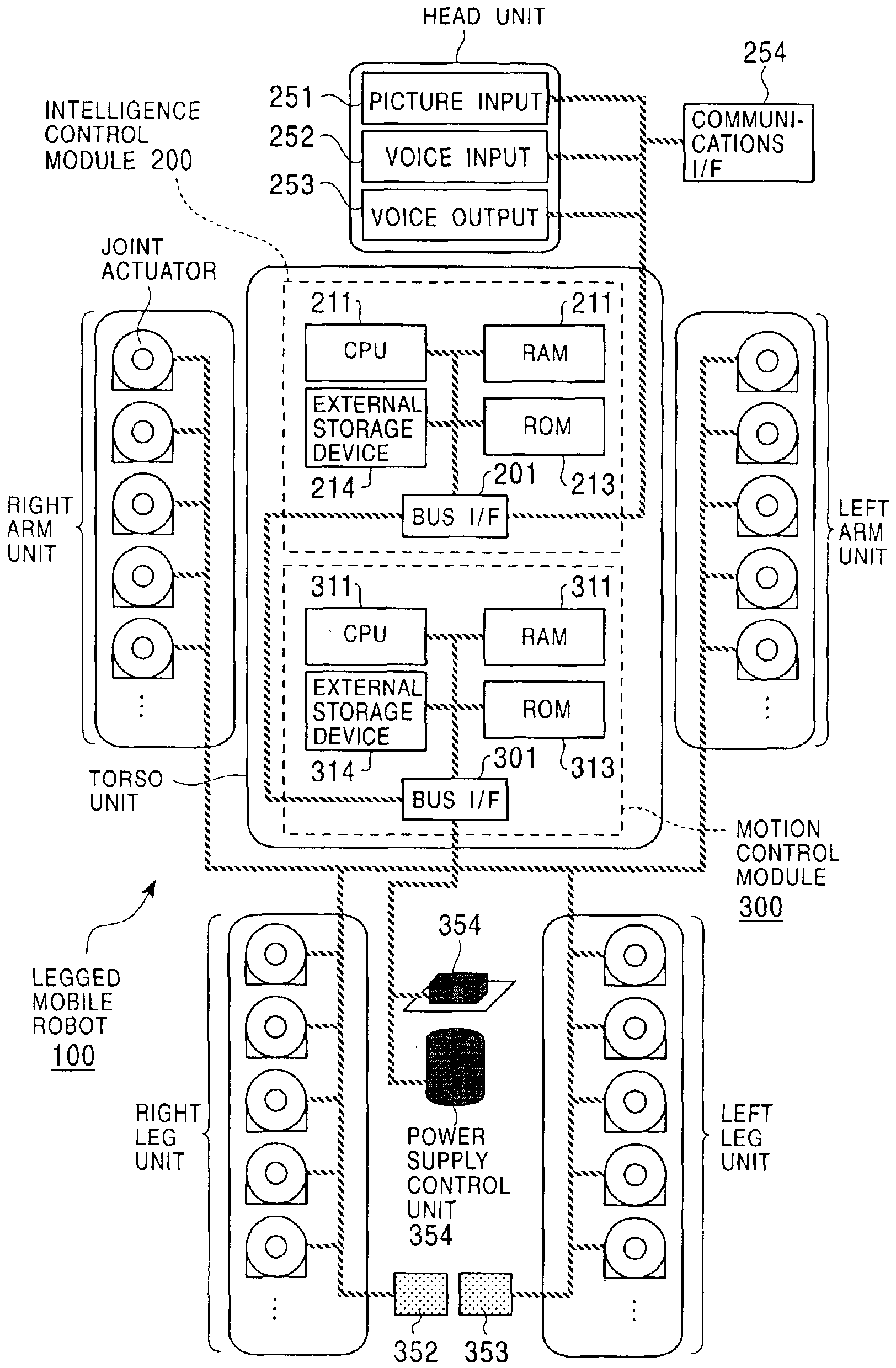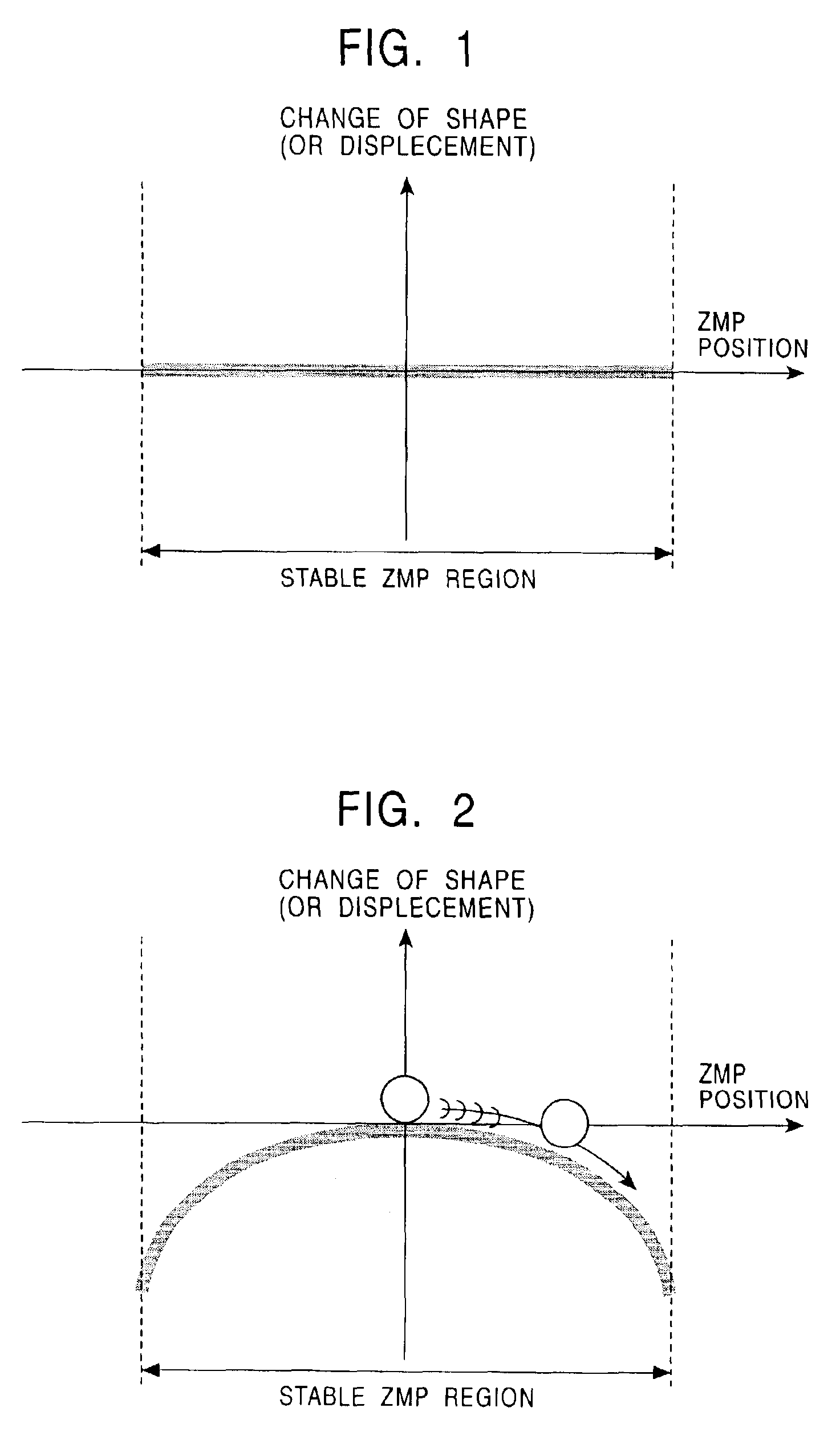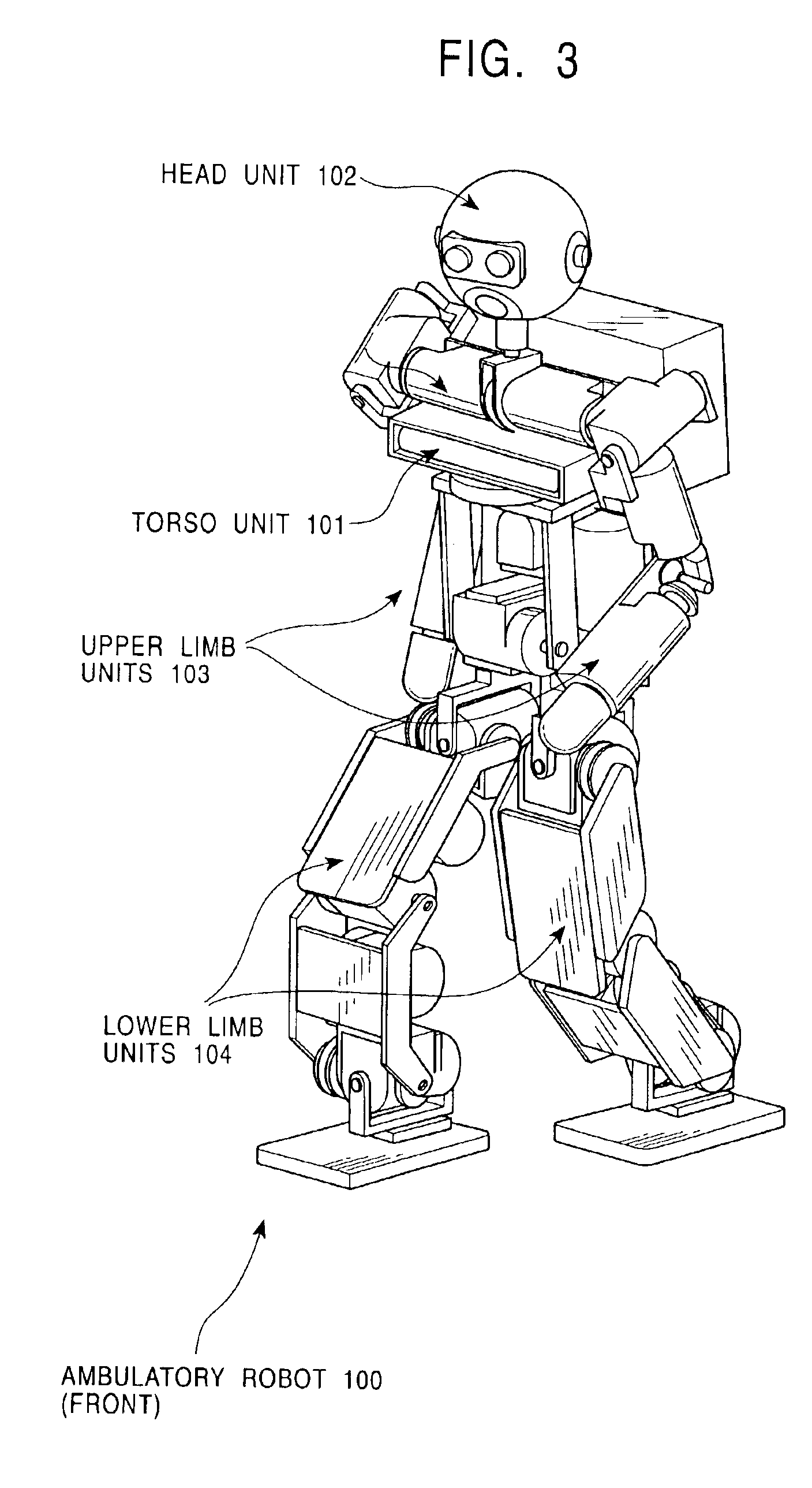Legged mobile robot and control method thereof, leg structure of legged mobile robot, and mobile leg unit for legged mobile robot
- Summary
- Abstract
- Description
- Claims
- Application Information
AI Technical Summary
Benefits of technology
Problems solved by technology
Method used
Image
Examples
Embodiment Construction
[0157]The embodiments of the present invention are discussed below with reference to the drawings.
A. Construction of the Robot
[0158]FIG. 3 and FIG. 4 illustrate the front and back of a “human-like figured” or “human-type” legged mobile robot 100 in an upstanding position, in which the present invention is implemented. As shown, the legged mobile robot 100 includes a torso unit 101, a head unit 102, left and right upper limb units 103, left and right lower limb units 104 for legging, and a controller 105 for generally controlling the operation of the robot body.
[0159]The left and right lower limb units 104, each of which includes a thigh, a knee joint, a lower thigh, an ankle, and a foot, are connected to the approximate lower end of the torso unit through hip joints. The upper limb units, each of which includes an upper arm, an elbow joint, and a forearm, are connected to top left side and top right side of the torso unit through shoulder joints. The head unit is connected to the ap...
PUM
 Login to View More
Login to View More Abstract
Description
Claims
Application Information
 Login to View More
Login to View More - Generate Ideas
- Intellectual Property
- Life Sciences
- Materials
- Tech Scout
- Unparalleled Data Quality
- Higher Quality Content
- 60% Fewer Hallucinations
Browse by: Latest US Patents, China's latest patents, Technical Efficacy Thesaurus, Application Domain, Technology Topic, Popular Technical Reports.
© 2025 PatSnap. All rights reserved.Legal|Privacy policy|Modern Slavery Act Transparency Statement|Sitemap|About US| Contact US: help@patsnap.com



